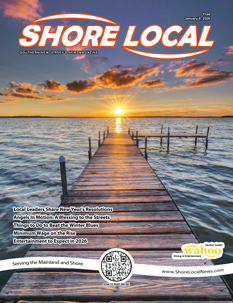By Meteorologist Joe Martucci
The pictures came flooding on Sunday night and Monday morning.
Again, it was the Northern Lights, dipping south and making their awe-inspiring presence known at the Jersey Shore.
Amateur and professional photographers were already out to capture the Perseid meteor shower. The Northern Lights was a very nice visual bonus for everyone up late (or early, depending on how you look at it).
This is the second instance of the Northern Lights, scientifically known as the Aurora Borealis, this year. The first was May 10-11. Then, the dazzling greens, pinks and purples even made it down to Florida. August’s version wasn’t as significant. Still, New Jersey goes years without a light show. To have it twice in a year is pretty remarkable.
What causes the Northern Lights?
The Aurora Borealis is caused by sun-ejected particles crashing into the Earth’s magnetic field. They move in a hurry, up to 45 million miles per hour, according to Space.com. This happens both in the Northern Hemisphere and Southern Hemisphere, creating the Northern Lights and Southern Lights, respectively.
We need the Earth’s magnetic field. It shields us from the sun’s charged particles that the sun always throws at us. Without the magnetic field, our atmosphere would erode away. Life on Earth wouldn’t exist as we know it. Mercury, Venus and Mars all do not have magnetic fields.
The sun always ejects these charged particles. We call it the solar wind. However, they eject in different directions at different times. They don’t always hit the Earth. When they do, it creates the Aurora Borealis.
When they do interact with the Earth’s magnetic field, the charged particles will be deflected toward the poles. They then interact with the atmosphere. The color of the aurora is dictated by what chemicals the solar wind mainly interacts with and how high in the atmosphere it does so.
Greens, yellows and reds are the most common and are caused by interaction with oxygen higher up in the atmosphere (100 miles or more aloft).
Blues come from the interaction with nitrogen, the most plentiful gas in the Earth’s atmosphere. This occurs at lower heights, lower than 100 miles.
How does NJ see the Aurora Borealis?
An increase in solar activity has caused New Jersey to be dazzled by these displays multiple times this year.
The more intense an ejection of charged particles from the sun, the further away from the poles the aurora can be seen.
The Space Weather Prediction Center (https://www.swpc.noaa.gov/), a government agency based in Boulder, Colo., tracks the intensity and progress of the solar ejections, known as geomagnetic storms. Like hurricanes, there are five categories to them. One is the weakest and five is the strongest.
On Aug. 11-12, a ‘G4’ geomagnetic storm hit the Earth. That’s classified as severe. They occur 60 days every 11-year solar cycle. That’s 1.5% of days in a solar cycle.
In a G4, the Aurora Borealis will be visible in New Jersey (as long as Mother Nature plays along and it’s clear outside). However, it may not be visible to the naked eye. You may need the long exposure on your camera to see it. It’ll also be visible in places like West Virginia, St. Louis, and Portland, Ore., too.
On May 7-11, though, the Earth was hit with a G5 storm. That’s “extreme” as the Space Weather Prediction Center labels it. It’s visible in New Jersey, even to the naked eye. At a minimum, it’s seen as far south as Richmond, Va. However, as we saw a few months ago, the Northern Lights were seen in the southerly climate of Florida.
A G5 storm happens four days every 11-year solar cycle. That’s 0.1% of the solar cycle’s time. It’s rare and there’s serious concern that the power grid and satellites will fail from this strong of a storm.
Why is NJ treated to all of these Northern Lights this year?
The aurora borealis is most common when the number of sunspots, cooler spots on the sun’s surface, increases. We’re now about four years into Solar Cycle 25. Every solar cycle is about 11 years long. So, this will continue until roughly 2030.
I’ll save you from the details. However, more sun spots bring more intensity geomagnetic storms.
Many factors need to be just right for New Jersey to see the Northern Lights. First, you need a G4 or G5 geomagnetic storm. That doesn’t happen often. That storm then has to be pointed at Earth. Even if they both happen, you simply need it to be clear enough to see its vivid colors, too. That takes a lot.
However, they have lined up twice this year. It was close in May, though. Clouds were around much of May 7-11.
With another six years of active solar activity expected, there will be a number of more opportunities to stay up late or get up early and see the Northern Lights.
Shore Summer Weekend Weather Report Card
This was my annual viewers’ choice weekend for the report card! Really, I was just away from New Jersey for the weekend, so I needed your expertise to let me know how the weather was down here.
The votes are in and this past weekend graded out to a ‘B’. Debby gave us just a glancing blow. Really, it was only Friday that was a bad day for the sea and sand. Saturday and especially Sunday were pleasant!
That leaves summer 2024 with a 3.2 grade point average so far.
Joe earned his Meteorology Degree from Rutgers University. He is approved by the American Meteorological Society as a Certified Broadcast Meteorologist and Certified Digital Meteorologist, the only one in the state with both. He’s won 10 New Jersey Press Association Awards. You can find him on social media @joemartwx








